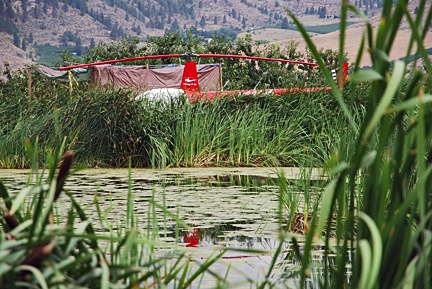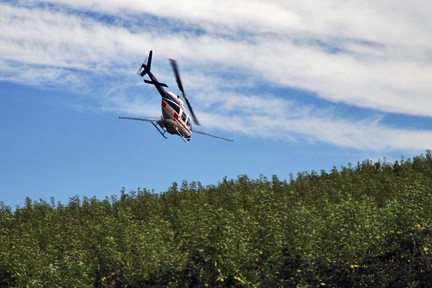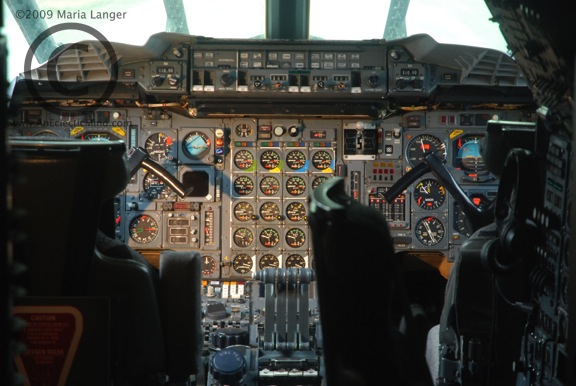It can’t be too easy, can it?
A few weeks ago, I got this e-mail message from a blog reader. In an effort to keep him anonymous, let’s call him Stu (short for student). Here’s what he had to say:
Perhaps you could post an article about the difficulties of initial licensing. I have some 40+ hours of instruction and believe I can fly a R22 quite well. My problem is the written test. I just can not get my arms around studying for and taking it. Partially due to time constraints, partially due to me being much better at practical things than book learning.. and partially of course, laziness.
I know I have to do it.. I just procrastinate a lot and simply have not gotten around to studying.. nor of course taking the test itself.
Any words or advice, thoughts, inspiration (LOL).
I wrote back, telling him that he’d just given me a topic for a blog post. I finally have time to write it.
So allow me to explain what you need to do to become a private helicopter pilot. In this first post, I’ll talk about the pre-test requirements. In the second part, I’ll talk about the tests and link to some useful resources that can help you pass them.
Hours
There’s a lot in that e-mail message, so I’ll start at the top. Stu says he has “some 40+ hours of instruction” and believes he “can fly an R22 quite well.” That’s great. If it’s true, it also makes him a better than average pilot. Most pilots need at least 60 hours of flight time before they’re proficient enough to take a check ride.
FAR Part 61.109, “Aeronautical experience” states, in part:
(c) For a helicopter rating. Except as provided in paragraph (k) of this section, a person who applies for a private pilot certificate with rotorcraft category and helicopter class rating must log at least 40 hours of flight time that includes at least 20 hours of flight training from an authorized instructor and 10 hours of solo flight training in the areas of operation listed in Sec. 61.107(b)(3) of this part, and the training must include at least–
(1) 3 hours of cross-country flight training in a helicopter;
(2) Except as provided in Sec. 61.110 of this part, 3 hours of night flight training in a helicopter that includes–
(i) One cross-country flight of over 50 nautical miles total distance; and
(ii) 10 takeoffs and 10 landings to a full stop (with each landing involving a flight in the traffic pattern) at an airport.
(3) 3 hours of flight training in preparation for the practical test in a helicopter, which must have been performed within 60 days preceding the date of the test; and
(4) 10 hours of solo flight time in a helicopter, consisting of at least–
(i) 3 hours cross-country time;
(ii) One solo cross-country flight of at least 75 nautical miles total distance, with landings at a minimum of three points, and one segment of the flight being a straight-line distance of at least 25 nautical miles between the takeoff and landing locations; and
(iii) Three takeoffs and three landings to a full stop (with each landing involving a flight in the traffic pattern) at an airport with an operating control tower.
The short version of this is that to be a private helicopter pilot, you need 40 hours of flight time, of which 20 must be dual, 10 solo, and 3 cross-country. Stu might meet this requirement.
Training
It isn’t enough to have the hours you need to be a pilot. You must also meet the requirements of FAR Part 61.107, “Flight Proficiency.” It points out, in part:
(a) General. A person who applies for a private pilot certificate must receive and log ground and flight training from an authorized instructor on the areas of operation of this section that apply to the aircraft category and class rating sought.
(b) Areas of operation.
…
(3) For a rotorcraft category rating with a helicopter class rating:
(i) Preflight preparation;
(ii) Preflight procedures;
(iii) Airport and heliport operations;
(iv) Hovering maneuvers;
(v) Takeoffs, landings, and go-arounds;
(vi) Performance maneuvers;
(vii) Navigation;
(viii) Emergency operations;
(ix) Night operations, except as provided in Sec. 61.110 of this part; and
(x) Postflight procedures.
This means it isn’t enough to just get 40 hours that meet the requirements of Part 61.109. You must also get training on all of these areas from an “authorized instructor,” or CFI. If Stu went to a reputable training organization to get his flight training, he might meet all of these requirement’s too.
Ground School
Aeronautical knowledge or “ground school” training is also required, although the FAA does not specify a minimum amount of time. This training helps a pilot understand the important part of flying: aerodynamics, aircraft operations, communications, weather, navigation, flight planning — the list goes on and on.
FAR Part 61.105, “Aeronautical knowledge,” gets pretty specific when it states:
(a) General. A person who is applying for a private pilot certificate must receive and log ground training from an authorized instructor or complete a home-study course on the aeronautical knowledge areas of paragraph (b) of this section that apply to the aircraft category and class rating sought.
(b) Aeronautical knowledge areas. (1) Applicable Federal Aviation Regulations of this chapter that relate to private pilot privileges, limitations, and flight operations;
(2) Accident reporting requirements of the National Transportation Safety Board;
(3) Use of the applicable portions of the “Aeronautical Information Manual” and FAA advisory circulars;
(4) Use of aeronautical charts for VFR navigation using pilotage, dead reckoning, and navigation systems;
(5) Radio communication procedures;
(6) Recognition of critical weather situations from the ground and in flight, windshear avoidance, and the procurement and use of aeronautical weather reports and forecasts;
(7) Safe and efficient operation of aircraft, including collision avoidance, and recognition and avoidance of wake turbulence;
(8) Effects of density altitude on takeoff and climb performance;
(9) Weight and balance computations;
(10) Principles of aerodynamics, powerplants, and aircraft systems;
(11) Stall awareness, spin entry, spins, and spin recovery techniques for the airplane and glider category ratings;
(12) Aeronautical decision making and judgment; and
(13) Preflight action that includes–
(i) How to obtain information on runway lengths at airports of intended use, data on takeoff and landing distances, weather reports and forecasts, and fuel requirements; and
(ii) How to plan for alternatives if the planned flight cannot be completed or delays are encountered.
So it isn’t enough to know how to fly the aircraft. You need to know all the other things that are part of being a pilot. That’s what ground school is about.
There is a way to complete ground school quicker, more conveniently, and probably more cost-effectively: buy a video training course. I used the King Schools course for my primary training as a way to supplement ground school. John and Martha may be among the most corny and/or boring people on the planet, but they do cover all the basics very well. When I used the course back in the late 1990s, it came with a certificate that can could be used as certification that I’d completed ground school training. (Remember that the FAA says a “home study course” is okay.) Of course, your CFI won’t sign off on you unless he knows that you’ve covered all that material and understand it, so don’t be surprised if you still need additional ground school after watching all those videos. Still, when I took the written test right after watching the videos for days on end, I passed easily with a 94.
Endorsements
Before I go any further and start talking about tests, I do need to comment on endorsements or “sign offs.” To solo, you need an endorsement. To take the written test, you need an endorsement. To take a check ride, you need an endorsement.
What is an endorsement? It’s a signed and dated note in your logbook that confirms you’re ready to do whatever the endorsement is good for: solo, take the written test, take the check ride.
Who gives you your endorsements? Usually, it’s your flight instructor, but in some instances, it could be another CFI at your flight school. Good flight schools often require you to take a “stage check” with another CFI before getting an important endorsement. This helps prevent an ineffective CFI from pushing a student forward when he’s not ready. It also helps identify ineffective CFIs and unprepared students.
This is the gotcha that a lot of student pilots don’t get. It isn’t enough to have the 40 hours and meet the requirements of Parts 61.109, 61.105, and 61.107 quoted above. You also have to be able to prove that you have the knowledge you need to pass the written test and that you can perform the maneuvers you’ll be required to perform on a check ride.
And in the real world, 40 hours usually isn’t enough flight time to get the endorsements you need to move forward.
Up Next
In the second part of this article, I’ll tell you about the two tests you need to take and pass to become a private helicopter pilot. I’ll also provide links to some resources you might find helpful for preparing for — and hopefully passing — these tests.








